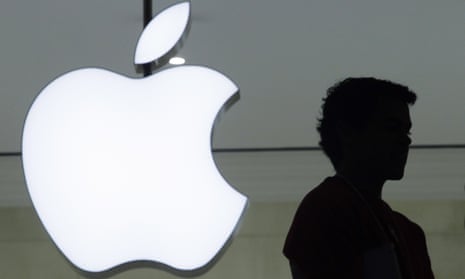The US government dropped its court fight against Apple after the FBI successfully pulled data from the iPhone of San Bernardino gunman Syed Farook, according to court records.
The development effectively ended a six-week legal battle poised to shape digital privacy for years to come. Instead, Silicon Valley and Washington are poised to return to a simmering cold war over the balance between privacy and law enforcement in the age of apps.
Justice Department lawyers wrote in a court filing Monday evening that they no longer needed Apple’s help in getting around the security countermeasures on Farook’s device.
“The government has now successfully accessed the data stored on Farook’s iPhone and therefore no longer requires the assistance from Apple Inc,” the government said. It then asked the court to vacate a 16 February court order demanding Apple create software that weakened iPhone security settings to aid government investigators.
On a conference call with reporters that the Department of Justice organized, a law enforcement official declined to offer details on the technique other than to say that it came from outside the government. The Guardian has reported that the technique used by the government has been classified.
The official also declined to say if the government would share the technique – which likely exploits a security glitch in the phone – with Apple. Doing so would presumably cause the company to patch the security flaw. This leaves the Justice Department with a difficult choice: make all iPhones more secure from other hackers and governments who know how to get inside, or preserve an investigative technique.
The government on Monday would only confirm the technique works on the iPhone model Farook used – the iPhone 5c – but it’s possible it could work on other models that run the same software.
Apple fought the February court order with a massive public relations and legal campaign. The company, America’s most valuable, argued that creating such software would force the company to betray its values along with the security and privacy of all of its customers.
Apple’s CEO Tim Cook argued that if Apple were forced to reengineer its products, it would open a Pandora’s box that could give the government outsized control over how Silicon Valley makes its products.
The case forced public leaders from Barack Obama to Bill Gates to declare where they stood on the balance between privacy and national security. It also kicked lawmakers into high gear to craft legislation governing a new generation of devices and messaging services that rely on strong encryption to protect user privacy.
Public opinion polls showed the public narrowly sided with the US government.
In some ways, the end of the battle turns the clock back to 15 February, the day before the San Bernardino iPhone fight went to court. At the time, authorities and technologists were publicly debating how encryption affects law enforcement but avoiding widely publicized court battles.
However, the brawl may have aided Apple slightly in the long run. After the San Bernardino case became public, Apple pushed a New York judge to rule in its favor in a similar case. That ruling is non-binding but could be instructive to the several other courts considering iPhone-unlocking cases.
It’s unclear what the next step will be for each side.
Government lawyers already have earmarked criminal investigations that require getting around encryption or other privacy features of various messaging services, such as Facebook’s Whatsapp, but are yet to take those companies to court.
“It remains a priority for the government to ensure that law enforcement can obtain crucial digital information to protect national security and public safety, either with cooperation from relevant parties or through the court system when cooperation fails,” Justice Department spokeswoman Melanie Newman said. “We will continue to pursue all available options for this mission, including seeking the cooperation of manufacturers and relying upon the creativity of both the public and private sectors.”
In the call with reporters on Monday, the law enforcement official declined to say clearly whether the FBI would share its new iPhone-hacking technique with other agencies, such as state and local police departments, stymied by iPhone encryption.
“We continue to assist them in appropriate cases,” the official said.
Alex Abdo, a staff attorney for the American Civil Liberties Union, said the outcome, “appears to be just a delay of an inevitable fight”.
In a statement on Monday night, Apple said: “This case should never have been brought.” But the iPhone-maker didn’t claim victory and made clear that it sees the debate with the government as ongoing rather than settled.
“We will continue to help law enforcement with their investigations, as we have done all along,” the company said. “And we will continue to increase the security of our products as the threats and attacks on our data become more frequent and more sophisticated.”

Comments (…)
Sign in or create your Guardian account to join the discussion